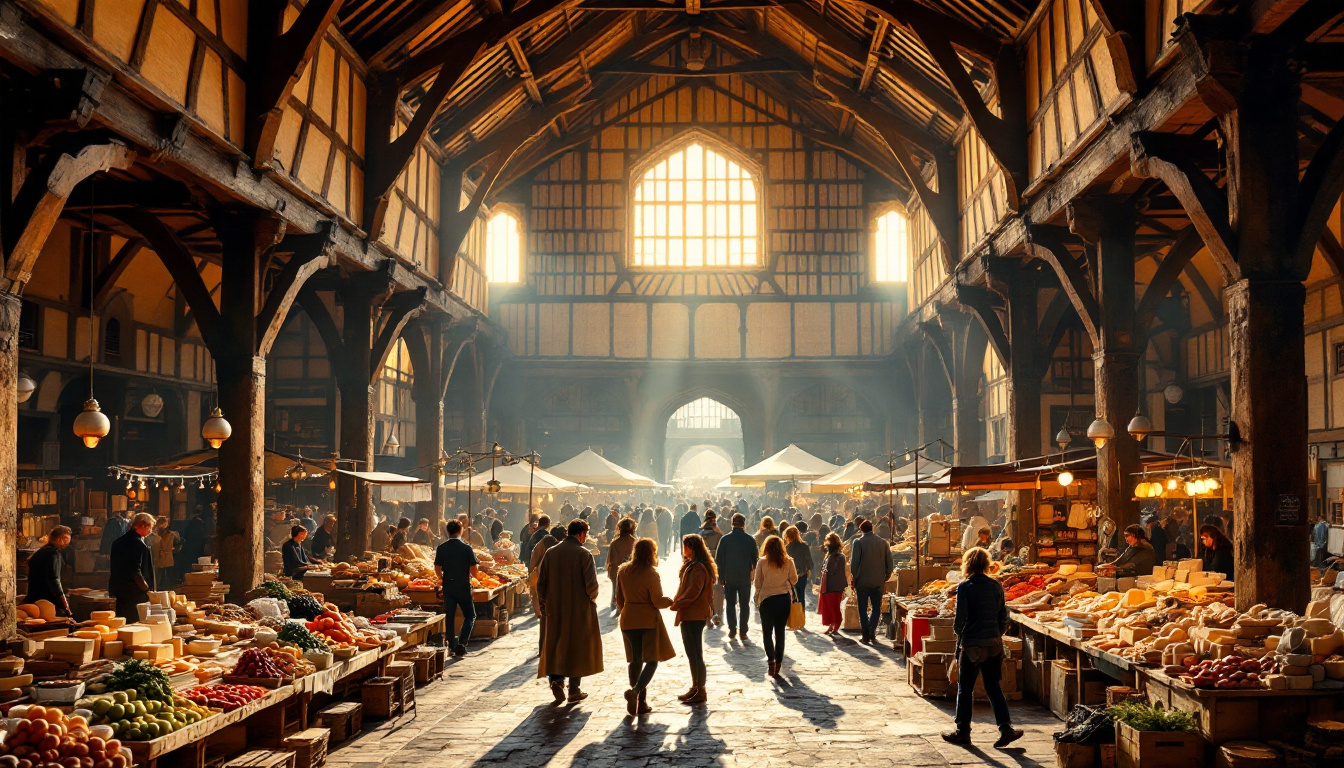In the sun-drenched foothills of the Montagne Noire in southern France sits Revel, an architectural marvel that has preserved its medieval soul for over six centuries. This fortified bastide town in Haute-Garonne isn’t just another picturesque French settlement – it’s a living museum where 14th-century urban planning meets vibrant market traditions that continue uninterrupted since 1342.
A market hall that defies time
The heart of Revel pulses beneath one of France’s most magnificent medieval wooden market halls. This masterpiece of carpentry stands on 79 oak pillars, sheltering the bustling Saturday market that has operated continuously for more than 600 years. Unlike many French towns that modernized their central squares, Revel’s medieval marketplace remains the authentic social hub of local life.
“Our Saturday market isn’t a tourist attraction – it’s where generations of families have bought their bread, cheese, and vegetables since before Columbus sailed to America,” explains Marie Dubois, a sixth-generation vendor whose family has sold goat cheese in the same spot since 1789.
The bastide pattern: Medieval urban perfection
Like other historic French villages that developed around religious establishments, Revel follows a distinctive medieval urban plan. Eight streets radiate from the central square in a perfect grid, flanked by arcaded galleries that once housed merchant workshops. This geometric precision reflects the military and commercial strategy behind bastide towns – defensive fortifications combined with economic prosperity.
Marquetry: The wooden art that defines a town
Revel’s international reputation rests on the delicate wooden inlay art of marquetry. The Museum of Wood and Marquetry showcases this craftsmanship that has thrived here since the 15th century. Modern artisans continue creating intricate wooden mosaics using techniques virtually unchanged for generations, transforming local and exotic woods into breathtaking decorative pieces.
The reservoir that changed France
Just three kilometers from town lies Lac de Saint-Ferréol, a 17th-century engineering marvel that powered the Canal du Midi. This artificial lake, created between 1667-1672, served as the primary water reservoir for the canal system that revolutionized transportation across southern France. Today, it offers peaceful shores for walking and water activities in striking contrast to cascading waterfall networks found elsewhere in Europe.
Église Notre-Dame: Where architectural styles collide
The neo-Romanesque Église Notre-Dame des Grâces presents an unexpected architectural surprise. Completed in the late 19th century, its Byzantine-inspired domes crown towers adorned with statues representing Christ and the apostles. The 1957 interior frescoes create a fascinating blend of ancient and modern religious art that captivates visitors.
“Our church reflects Revel’s soul – we respect tradition while embracing artistic innovation. The Byzantine influences remind us that southern France has always been a crossroads of cultures,” notes local historian Pierre Vidal.
Beyond tourist trails: Authentic experiences
Unlike coastal French villages that draw summer crowds, Revel offers authentic immersion into Occitan culture year-round. The Saturday market remains the unmissable experience – arrive early to watch vendors arrange their stalls beneath the ancient timbers as they’ve done for centuries, then follow locals to corner cafés for post-shopping espresso.
Pilgrimage connections: Steps on sacred paths
Revel holds historical significance as a stop on the Way of Saint James pilgrimage route to Santiago de Compostela. Like other medieval villages with religious heritage, it provided rest and spiritual renewal for medieval pilgrims. Today, modern walkers still follow these ancient paths, connecting Revel to a network of spiritual journeys spanning Europe.
Forest meditation: Nature’s cathedral
The surrounding Montagne Noire forests create natural sanctuaries for contemplation, though lacking the protected status of Kyoto’s famous bamboo forests. These oak and chestnut woodlands offer peaceful hiking trails with occasional glimpses of medieval stone bridges and forgotten chapels hidden among ancient trees.
Revel demonstrates that authentic French heritage survives beyond postcard villages and tourist centers. Here, medieval urban planning, living craft traditions, and vibrant market culture converge in a town that remains essentially unchanged for centuries – a rare window into southern France’s medieval soul where daily life continues in the shadow of history.
